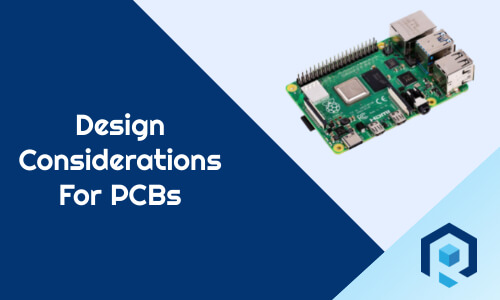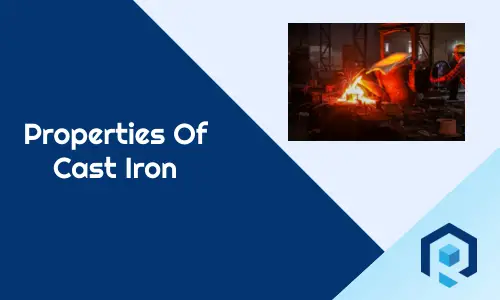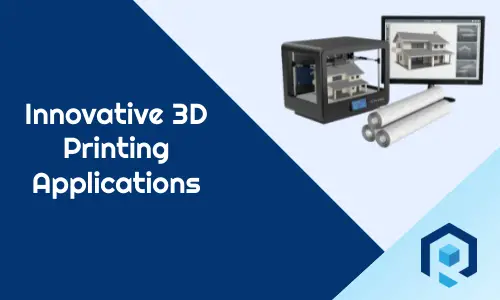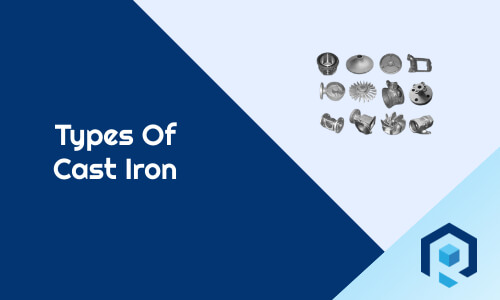Belt Drives are used to transfer power from one shaft to another. This is one of the easiest and cheapest ways to transfer power in a machine. Let us learn in this article more about types of Belt Drive, the application of belt drive, and how does belt drive work. At the end of this article, you will get a link to download the belt drive PDF copy you can use for your future reference.
What Is A Belt Drive?
In a belt drive system, there are two or more pulleys connected with a belt in tension. The pulley that transfers the power is called the driver pulley, and the pulley that receives the power is called the driven pulley. A simple two pulleys belt drive system is shown below.
Belt drive is used in automobiles, home appliances like washing machine, toys, and other similar products.
![Belt Drive: Types, Material, Application, Advantages & Disadvantages [PDF] 1 belt drive](https://www.riansclub.com/wp-content/uploads/2020/10/belt-drive.png)
Working Principle Of Belt Drive
When the driver’s pulley rotates, it causes pulling action to the belt due to friction. The driven pulley absorbs that pulling action and rotates in the same direction as the driver pulley. If the belt is attached in the reverse direction, then the driven pulley will also rotate in the reverse direction.
The pulling action is generated due to the friction between belts and pulleys. More the friction, better the power transmission and less chance of slippage.
Power transmission capacity of belt drive depends on the the co-officiant of friction between the belt and pulley, belt velocity, angle of wrap and the unit mass of the belt.
If the distance between two pulleys is more, then one side of the belt will be under tension, and it is called the tight side. The other side of the belt will be loose, and it is called the slack side.
Types Of Belt Drive
Based on how pulleys are arranged and how power is transmitted, belt drives are categorised into following types.
- Open belt drive
- Crossed belt drive
- Stepped cone pulley drive
- Jockey pulley drive
- Fast and loose pulley drive
Open Belt Drive
In the case of an open belt drive, the driver pulley and the driven pulley rotates in the same direction. The Pulleys are placed in parallel with each other. This is the most common type of belt drive used in machines.
![Belt Drive: Types, Material, Application, Advantages & Disadvantages [PDF] 1 belt drive](https://www.riansclub.com/wp-content/uploads/2020/10/belt-drive.png)
Few examples are Flour Mills, Cam Shaft, Alternator, belt conveyor etc.
How To Calculate Belt Length Of Open Belt Drive?
![Belt Drive: Types, Material, Application, Advantages & Disadvantages [PDF] 3 belt drive](https://www.riansclub.com/wp-content/uploads/2020/10/BELT-DRIVE-2.jpg)
Crossed Belt Drive
In crossed belt drive, the driver pulley and the driven pulley rotates in the opposite direction. When you need to transfer more power, then crossed belt drive is good. But the speed in a crossed belt drive is slow. This is because there will be more wear and tear at the junction ( where the tight side and slack side meet) if the speed is more.
![Belt Drive: Types, Material, Application, Advantages & Disadvantages [PDF] 4 belt drive](https://www.riansclub.com/wp-content/uploads/2020/10/BELT-DRIVE-2.png)
The angle of contact is more in a crossed belt drive. The belt length is usually less, and there is less chance of slippage in cross belt drive.
Few examples are lathe machine, treadmill, paper machine drives etc.
How To Calculate Belt Length Of Crossed Belt Drive?
![Belt Drive: Types, Material, Application, Advantages & Disadvantages [PDF] 5 belt drive 1](https://www.riansclub.com/wp-content/uploads/2020/10/belt-drive-1.jpg)
Stepped Cone Pulley Drive
Applications where you may need to change operational speed frequently, stepped cone pulley drive is used.
As you can see in the below image, the design of the pulley is not like any traditional pulley. Instead, these pulleys have steps or grooves. So if you need a different speed, you need to engage the belt in a different groove. That’s it. Otherwise, you need to change the pulley every time you need a different speed.
![Belt Drive: Types, Material, Application, Advantages & Disadvantages [PDF] 6 belt drive 3](https://www.riansclub.com/wp-content/uploads/2020/10/belt-drive-3.jpg)
Stepped cone pulleys are always used in pairs. When you change the belt to a different groove, the corresponding side also needs to be changed.
Few examples are Lathe Machine, Drill press, milling machine etc.
Jockey Pulley Drive
There is a rule in the belt drive that states that the diameter ratio of the big pulley and small pulley should be 6:1 maximum. If this ratio is more in any belt drive system, then the arc of contact is reduced. In can case, there won’t be much friction to create pull force.
To overcome this issue, an extra pulley is used in between two main pulleys. This pulley is called Jockey Pulley or idle pulley.
![Belt Drive: Types, Material, Application, Advantages & Disadvantages [PDF] 7 belt drive](https://www.riansclub.com/wp-content/uploads/2020/10/JOCKEY-PULLEY.jpg)
Please make a note that the Jockey pulley is only used in open belt drives. As you can see in the above picture, a Jockey pulley is used to increase the arc of contact of the belt in the driven pulley.
Jockey Pulley is used to taking up the slack and sometimes changing the direction of driven pulley rotation. The idle pulley or jockey pulley does not transmit power to any shaft.
Fast And Loose Pulley Drive
A fast and loose pulley drive is used when multiple machines are connected to a single power source, and you want to start and stop any machine at your will without stopping the power source.
Each machine connected to the power source will have a pair of fast and loose pulleys. The fast pulley is the one that is keyed to the machine shaft. The loose pulley can rotate freely and is not connected to the machine shaft.
When you don’t want to transfer power to any machine, connect the belt to the loose pulley and when you feel the power should be transmitted to the machine, connect the belt with the fast pulley.
In a nutshell, a fast pulley transmits power, but a loose pulley does not. A loose pulley is called a free pulley sometimes. This kind of pulley is widely used in paper mills.
![Belt Drive: Types, Material, Application, Advantages & Disadvantages [PDF] 8 belt drive](https://www.riansclub.com/wp-content/uploads/2020/10/fast-and-loose-pulley.png)
Types Of Belt
Here are the different types of belt used in the industries.
- Flat Belt
- V Belt
- Circular Belt
- Timing Belt
Flat Belt
Flat Belt is the simplest belt type having a rectangular cross-section. This type of belt transmits low power between long-distance(5-10 miters ) pulleys.
The friction between belt and pulley creates the pull force that drives the driven pulley.
![Belt Drive: Types, Material, Application, Advantages & Disadvantages [PDF] 9 belt drive](https://www.riansclub.com/wp-content/uploads/2020/10/flat-belt.png)
Advantages Of Flat Belt Drive
- Can transmit power between long distance
- Design is easy and cheap to manufacture
- A higher speed is possible in a flat Belt drive
Disadvantages Of Flat Belt Drive
- It cannot be used to transmit high power
- Slippage is very common
- Not suitable for a short distance
- High noise and low mechanical Efficiency.
V Belt
V Belt has a trapezoidal cross-section. It is used to transfer a high amount of power between short distances. This type of belt is used with grooved pulleys.
![Belt Drive: Types, Material, Application, Advantages & Disadvantages [PDF] 10 belt drive](https://www.riansclub.com/wp-content/uploads/2020/10/v-belt.png)
Advantages of V belt
- Capable of transferring high power
- Best suited for short-distance power transmission
- Low slippage
Disadvantages of V belt
- Not suitable for long-distance power transmission.
- Costly compared to flat Belt drive.
Circular Belt
Circular Belt or round belt has a circular cross-section and is used in grooved pulleys. Widely used to transmit power between long distances.
![Belt Drive: Types, Material, Application, Advantages & Disadvantages [PDF] 11 belt drive](https://www.riansclub.com/wp-content/uploads/2020/10/round-belt.png)
Advantages of circular pulley
- Can transmit power between long distances
- Low cost compared to other belt types
- High Mechanical efficiency
Disadvantages of Circular Pulley
- High Slippage
- Short distance power transmission is not feasible
Timing Belt
The timing belt has teeth similar to gears, and those are used with teethed pulleys. The timing belt drive is often called Positive Drive, as there is almost no slippage. This is because once the timing belt is engaged with teethed pulleys, there is absolutely no room to slip.
![Belt Drive: Types, Material, Application, Advantages & Disadvantages [PDF] 12 timing belt](https://www.riansclub.com/wp-content/uploads/2020/10/timing-belt.png)
Advantages Of Timing Belt
- Absolutely no slippage at all
- Constant velocity ratio
- Very low noise
Disadvantages of Timing Belt
- Very Costly
- Initial belt engagement is a bit tricky
What is Slip And Creep In Belt Drive?
Slip
A belt drive is all about frictional forces. Right? If there is enough friction, the driven pulley will rotate along with the belt. But if there is not enough friction, then the belt may pass through a couple of revolutions, but the driven pulley does not rotate along with it. This phenomenon is called slippage in the belt drive.
Creep
All belts are elastic in nature. That means that under tension, the length will increase, and under compression, the length will decrease.
The belt has one area in the belt drive where the tension is more than the other side. That side is called the tight side. The other area where tension is less is called the slack side.
On the tight side, due to tension, the belt length increases, and on the slack side, due to compression, the belt size decreases. That means that the driving pulley will get more length of the belt, and the driven pulley will get less length of the belt.
The uneven stretch of the belt around two different sides of the belt causes some relative motion of the belt against the pulleys. This phenomenon is called Creep.
Difference Between Slip And Creep
Slip is caused due to insufficient friction between the belt and pulleys, whereas creep is due to the uneven stretch ( Due to elastic property) of the belt on the tight and slack sides.
Although the phenomenon is different, both have one thing in commons. Both affect the velocity ratio of the belt drive and thus affect the power transmission.
Advantages Of Belt Drive
- Simple in construction
- Can transmit power between long-distance and a short distance
- Can transmit low power as well as high power
- Less maintenance required
- No coolant or lubricant required
- The price is relatively low
Disadvantages Of Belt Drive
- Power loss due to slip and creep
- The belt may get damaged after few years of usage
- Getting constant speed velocity is a big pain.
- Not suitable for transmitting between very short distance
- Speed is limited
Application Of Belt Drive
- In washing machines to transfer power from the motor shaft to the drum shaft
- Alternators in automobiles
- Flour mills.
- Lathe Machine, Milling Machines, Drilling machine, etc
- Paper mills
- Conveyors
In fact, the belt drive is used in almost all machines that you see nowadays. The reason is simple. A belt drive is one of the easiest ways to transfer power.
Things to consider while choosing materials for belts
- The material should have a high coefficient of friction
- Low weight per unit length
- Can able to withstand temperature
- Capable of resisting high tensile stress
- Should be flexible as well as durable
- Self-lubricated
- Resistance to wear and tear
- Food grade compatible if the belt is in contact with any food items.
- It should be odor-free
- Should not be toxic
Belt Materials
Although there are many materials that can be used in belts, the following materials are widely used in industries for belts.
- Leather
- Plastic
- Cotton
- Rubber
Conclusion : Belt Drive
That’s all I have in this article. I hope you got a fair idea about belt drives. If you still have any questions, please write in the comment section, and I will be happy to help.
You may also like to read: What is chain drive?
Frequently Asked Questions On Belt Drive
What is a V belt drive?
V belt drive has a trapezoidal cross-section and is used with grooved pulleys to transmit high power between short distances.
What is slip in belt drive?
When there is insufficient friction between the belt and pulley, the belt revolves through without taking the driven pulley. This phenomenon is called Slip.
What is an open belt drive?
In an open belt drive, the driver pulley and the driven pulley rotates in the same direction. This type of belt drive is used to transfer low power between long distances.
What is Belt Drive?
Belt drive consists of a belt and two or more pulleys to transfer power between two shafts.
What are the types of Belt drives?
Open belt drive
Crossed belt drive
Fast and loose pulley belt drive
Stepped cone pulley belt drive
Jockey pulley belt drive
What are the types of belts available?
Flat Belt
V Belt
Round Belt
Timing belt



